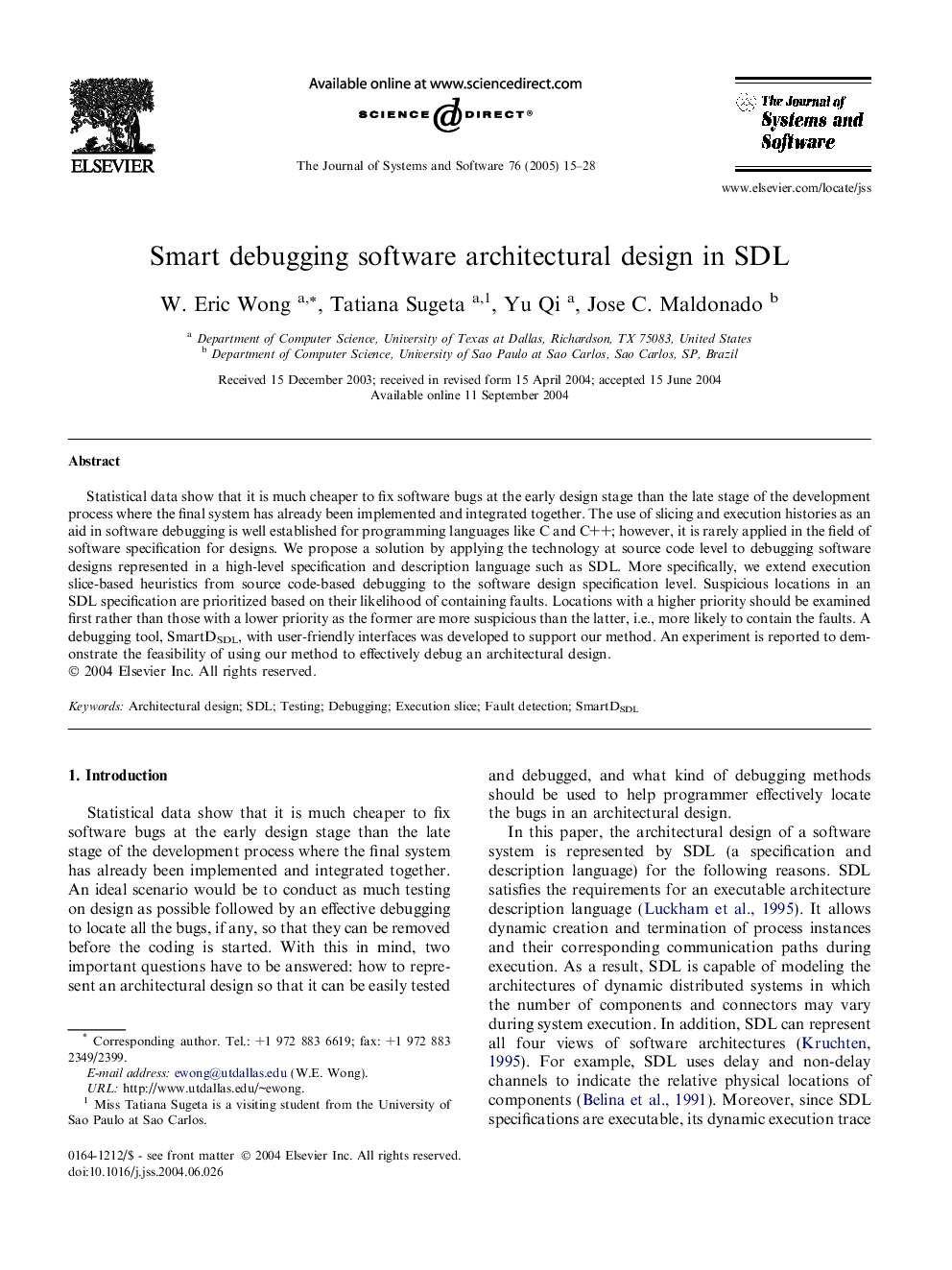| Article ID | Journal | Published Year | Pages | File Type |
|---|---|---|---|---|
| 10348911 | Journal of Systems and Software | 2005 | 14 Pages |
Abstract
Statistical data show that it is much cheaper to fix software bugs at the early design stage than the late stage of the development process where the final system has already been implemented and integrated together. The use of slicing and execution histories as an aid in software debugging is well established for programming languages like C and C++; however, it is rarely applied in the field of software specification for designs. We propose a solution by applying the technology at source code level to debugging software designs represented in a high-level specification and description language such as SDL. More specifically, we extend execution slice-based heuristics from source code-based debugging to the software design specification level. Suspicious locations in an SDL specification are prioritized based on their likelihood of containing faults. Locations with a higher priority should be examined first rather than those with a lower priority as the former are more suspicious than the latter, i.e., more likely to contain the faults. A debugging tool, SmartDSDL, with user-friendly interfaces was developed to support our method. An experiment is reported to demonstrate the feasibility of using our method to effectively debug an architectural design.
Related Topics
Physical Sciences and Engineering
Computer Science
Computer Networks and Communications
Authors
W. Eric Wong, Tatiana Sugeta, Yu Qi, Jose C. Maldonado,
